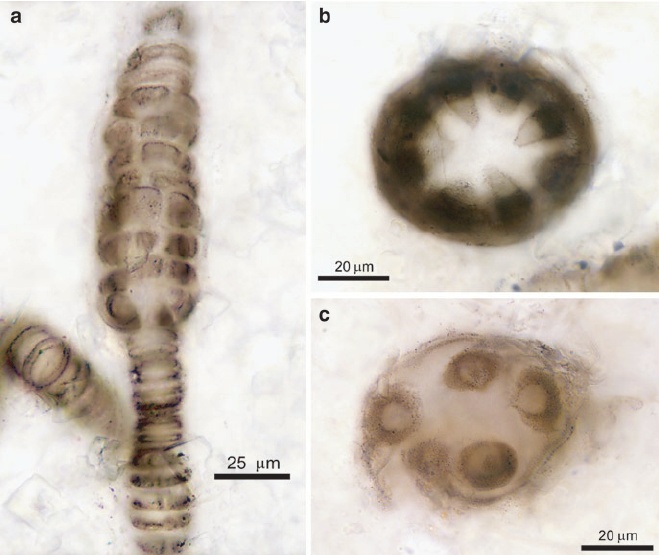- The new research shows that the origin of photosynthesis in today’s plants had begun nearly 1.25 billion years ago.
- Previous studies had placed it somewhere between 0.7 and 1.2 billion years.
- Researchers put “Bangiomorpha pubescens” fossil’s age into a molecular clock to precisely measure when chloroplast was created.
Photosynthesis evolved way early in the history of Earth. As gases released by organisms altered the lighting conditions on which they depended, they had to evolve new colors. Although some steps in photosynthesis are still not entirely understood, the overall photosynthetic equation has been known since 19th century.
According to the new examination by earth scientists at McGill University in Canada, the oldest algae fossils on Earth are a billion year old. They estimated that the origin of photosynthesis in today’s plants had begun approximately 1.25 billion years ago. Earlier estimates had placed it somewhere between 720 million and 1.2 billion years.
These findings could resolve long-standing mysteries of fossilized algae, Bangiomorpha pubescens, that were first discovered in 1990 in Arctic Canada. They are the oldest known direct ancestor of today’s animals and plants, but its age was poorly resolved chronologically and taxonomically.
It turns out that the duration of Earth’s history that often referred to as “Boring Billion” might not have been so boring at all. Actually, it might have been more dynamic than previously thought.
Between 1.8 billion and 800 million years ago, bacteria, archaea, and plenty of other organisms that have since gone extinct milled about the Earth’s oceans, with small biological change. The era could have set the platform for the proliferation of even more complicated life forms that reached its peak level 541 million years ago with Cambrian Explosion.
Finding Precise Age of Fossils
To find the accurate age of fossils, researchers searched the rough and bumpy area of remote Baffin Island, where Bangiomorpha pubescens have been found. They collected samples of black shale from rock layers consisting of algae fossils.
By applying Rhenium-Osmium dating technique (a type of radiometric dating based on the beta decay of the isotope rhenium to osmium) to sedimentary rocks, researchers discovered that the rocks are 1.047 billion years old — 150 million years younger than previous estimates.
These findings will allow researchers to make more accurate assessments of eukaryotes’ early evolution, which is an organism (including animals and plants) whose cells have a cell nucleus and other organelles enclosed within membranes. Eukaryotes can be unicellular or multicellular organisms.
 Bangiomorpha pubescens | Image source: ResearchGate
Bangiomorpha pubescens | Image source: ResearchGate
Since Bangiomorpha pubescens is very much similar to today’s red algae, researchers have previously proposed that the ancient alga, such as green plants, used sunlight to synthesize nutrients from water and carbon dioxide. They discovered that chloroplast (organelles, specialized compartments in plant and algal cells) was made long ago when a eukaryote engulfed a photosynthetic bacterium. Since then, it has managed to pass on that DNA to its successors, including trees and plants, producing most of the global biomass at present.
Reference: GeoScienceWorld | doi.org/10.1130/G39829.1 | McGill University
Chloroplast’s Origin
After determining the age of the fossil, researchers plugged that data into a molecular clock, which is a computer model based on the mutation rate of biomolecules, for measuring the time in prehistory when two or more life forms diverged.

They found that chloroplast must have been engulfed into eukaryotes approximately 1.25 billion years ago. The date of primary plastid endosymbiosis could be seen as a benchmark for examining fossil records of early eukaryotes and their role in the Proterozoic biosphere.
Read: Astronomers Find Young Stars In An Old Part Of The Milky Way
The team hopes and expects that other researchers will use this data in their own molecular clocks to measure the timing of crucial events of the history and cross-validate their results.


